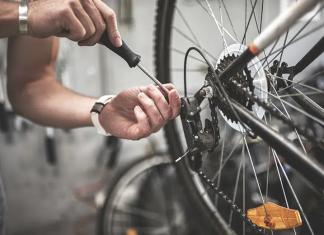With temperatures rising across the country, you’ve probably got your pool summer-ready.
The process of de-winterizing the pool can be quite long and tedious, but it’s a task that’s got to be done the right way. Once that’s out of the way, you can plan ahead for fun times all through the season.
If you haven’t got a pool installed yet, this is a great time to treat yourself and your family to an affordable, good quality above ground pool. Surveys show that there were more than 10 million pools across the country in 2010. Nearly 50% of these were above ground pools. No doubt these figures have gone up since then.
However, there are still a lot of folks out there who are still debating about whether to get a pool or not. The thing that puts a lot of people off getting a pool in their own yards is the thought of cleaning and maintenance.
There’s no doubt that pools mean a lot of hard work, regular cleaning schedules and a no-compromise approach to hygiene and safety. Fun in the sun is a given, but even a small-sized pool can mean a good deal of hard work.
But it’s not as bad as you imagine. Once you get into the routine, and when you have a buy-in from the family about sharing the work, keeping your pool sparkling fresh and inviting is a breeze.
Some Common Pool Issues
Discolored water: Your pool water should be clear and transparent. If it has turned pale green or gray, it probably means that the chlorine levels are low and the algae are taking over. Cloudy water is another common problem. This happens when regular maintenance doesn’t happen.
Debris: Floating and sunken debris, dead leaves and twigs, sand and mud can clog your filter and damage the cartridge.
Spots and Stains: Black spots indicate fungi and algae, while stains could be of various metallic components in the water, or a crack in the foundation.
Water Level: Low level of water could burn out the pump and upset the water chemistry. Inadequate levels of chlorine in the water can lead to the outbreak of infectious diseases. Calcium build-up in the water can lead to itchy and sore skin. Irritated skin and burning eyes could be because of imbalance in pH.
So now you know the potential problems that come with lack of regular maintenance, it’s a smart move to draw up a workable schedule. Have a maintenance checklist for regularly checking pH, water level, alkalinity, and chlorine levels. This schedule can also provide alerts about when to run the pump, clean the filters, vacuuming etc.
Cleaning Your Pool: Tips and Tricks
- Scrub n Skim: This is something you simply can’t avoid. If you’d like to take some of the pain out of it, get yourself a robotic pool cleaner. Before you buy one, do your research so that you know exactly what to look for in a robotic pool cleaner. Keep your pool covered when it’s not in use to reduce leaves and debris. But scrubbing is a daily chore. Scrub the sides and bottom thoroughly and apply chlorine to stubborn spots. Many above-ground pools have an issue with water circulation especially in those hard-to-reach places. While you’re scrubbing, make sure that the ladders, steps, under skimmers, and corners/crevices are carefully gone over. Skimmers are great to remove dead leaves, twigs and flowers if you have trees and plants growing near the pool.
- Good Quality Filter: Dirt, leaves, twigs and other debris make the water dirty and messy. You need to remove the filter cap at least once a week, lift out the filter basket and clean it out and also wash out the pipes. However, ensure that this isn’t done too often, as it can damage the filter. It should ideally run for only six to seven hours a day.
- Water Chemistry: This is a vital aspect of pool maintenance. Weekly testing of chlorine and pH levels helps to make swimming comfortable and irritation-free, besides safe and hygienic. Alkalinity and calcium-levels are other important things to check. You will also have to shock the pool and add a good algicide to keep the algae at bay. If you’re worried about using chlorine as a sanitizer in the pool, you can substitute with ionizers, ozone generators or UV sterilization. If you’re also concerned about excess chemicals in your pool, you can use household baking soda (sodium bicarbonate) to stabilize the alkalinity.
- Water Levels: Just as the chemistry is important, the level of water in the pool has to be monitored carefully. If you live in a hot and sunny region, there could be excessive evaporation. Rainstorms could drive the levels up unexpectedly. Kids playing boisterous games in the pool could splash out huge amounts of water. Ensure that the level is at least 50% up to the opening of your skimmer. You can top up with your garden hose, or reduce the levels with a small, handy submersible pump. Ensure that the pump isn’t too heavy or it could damage your pool liner.
- Tennis Ball Trick: Our bodies and hair secrete natural oils that enter the water in swimming pools, leaving a fine layer of grease on the surface. We also use tanning lotion, sunscreen and hair products that have the same effect. Simply throw a couple of tennis balls into the pool and they’ll soak up the oils. These balls have dense fibers on them that act as oil traps, keeping the surface of your pool clean and fresh.
- Poolside: It’s just as important to ensure that the poolside and surroundings are neat, clean and safe. You can power-wash the deck and poolside with your car-wash hose or you can rent a power-hose once a month. Remember to remove all the loose dirt and debris before you start washing and don’t let the spray be focused too much on the sides or surface of the pool. Give all the poolside furniture a good wash and scrub, dump cushions and covers into the washing machine and make sure that there aren’t any spots of mildew on your towels before you give everything a good clean-up.
Regular and consistent maintenance helps you to enjoy your pool completely, without worrying about allergies, infections and breakdowns.













